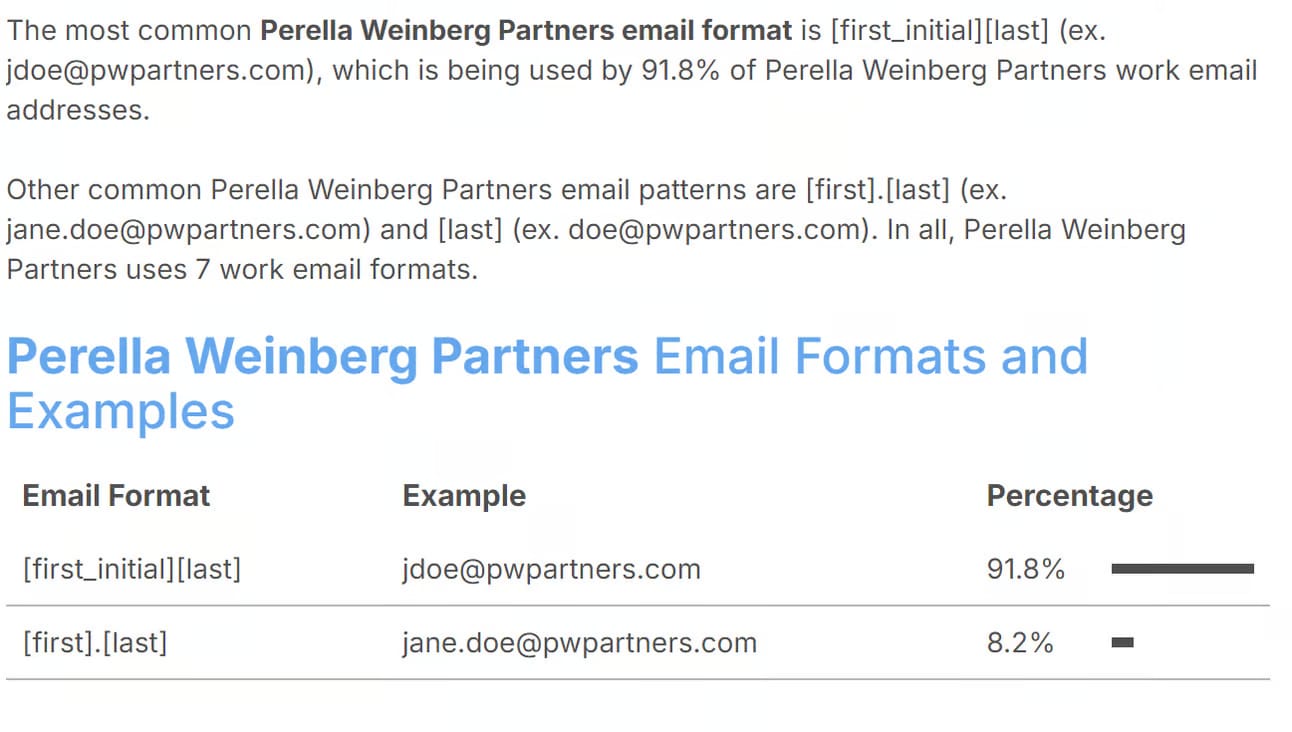- The Non-Target Playbook
- Posts
- Top 3 Freshman Year Internships - Investment Banking
Top 3 Freshman Year Internships - Investment Banking

Top candidates now have 2-3 internships BEFORE sending their first networking email sophomore year.
Internships give instant credibility, showing every top bank you have relevant real-world experience.
I cold applied to hundreds on handshake freshman year and was rejected by every single one.
What I didn’t realize was internships listed on those online portals don’t hire freshmen.
You have to seek freshman year gigs out on your own -
Which basically involves cold emailing tons of people to convince them to hire you for little-to-no pay.
Working for just the learning experience & resume boost pays huge dividends - trust me.
It makes you competitive for the most elite junior year internships -
Which if you don’t screw up will lead to a full-time return offer.
But cold emailing is an art and you have to target the right types of firms -
So here’s how I networked my way into one to pad my resume before recruitment sophomore year.
TABLE OF CONTENTS
I. 3 TYPES OF FINANCE FIRMS THAT HIRE FRESHMEN
II. 3 STEPS TO REACH OUT
3 TYPES OF FIRMS THAT HIRE FRESHMEN
The key is to target SMALLER finance firms that need help with grunt work.
As a freshman you have no credibility, so you have to build trust by doing grunt work to perfection.
Once you earn your stripes, they’ll give you real responsibility which is what looks best on your resume.
There’s three types of firms / departments you should be going after.
1 - SEARCH FUNDS
These are basically one-man private equity shops.
Searchers are typically ex-bankers / consultants who just got their MBA and want to buy their own small business.
Their goal is to improve it as CEO over the course of about five years then sell it for a profit at the end.
They’ll raise money from a ton of investors and have a two year deadline to find the perfect business.
That sourcing phase is super labor intensive and involves contacting thousands of companies.
But they have tight budgets - Which is why they are willing to hire inexperienced freshmen to help out.
Here’s what your resume would look like after a search fund internship.

The day-to-day tasks are extremely relevant for banking, especially those listed below.
DUE DILIGENCE - Digging into messy sales / purchase data to draw conclusions on risks & highlights such as concentration. Building financial models using assumptions for projections. Requesting additional data and facilitating administrative parts such as signing the NDA.
CIM REVIEWS - Reviewing fifty page memos (Confidential Information Memorandum / CIM) created by brokers & giving recommendation with evidence to searcher. Advising on whether it’s worth asking for more info or if you’re better off spending time elsewhere.
TARGET LISTS & OUTREACH - Identifying attractive sub-sectors within searcher’s area of focus. Using databases to compile contact info for potential targets. Creating automated email campaign to send personalized messages to owners & maintaining follow-up schedule.
Even if the searcher doesn’t directly ask you to build a model - build one on your own anyway.
My younger brother interned at a search fund and built a model for every company they got serious with so he could add it to his resume and talk about it during interviews.
If you need a good model template, here’s one from M&I.
2 - CORPORATE DEVELOPMENT
This is what I did summer after freshman year.
You’ll be working at a big company but on a smaller team that focuses on mergers & acquisitions.
I reached out to an alumni in a corporate development role at a huge tech firm.
His department was only about four people and they focused on looking for smaller add-on acquisitions to complement their core business.
There’s a lot of grunt work here too which is what I offered to help with.
Similar to search funds, it involves cold outreach to owners who may not even know selling is an option.
Here’s what your resume could look like after one of these internships.

Here’s a list of the most relevant tasks to banking.
Again - there’s a lot of overlap with search funds but some variation.
DUE DILIGENCE - Less likely you’ll get in the weeds with a businesses since there’s less urgency than a search fund. Still possible you may get deep into negotiations with one or two. Take advantage if so, since this is most relevant task by far.
CIM REVIEWS - Spent most of my time on this. You’re looking for businesses that’re bigger than what search funds want - So it’s more likely the seller will be represented by an advisor. I’d do two or three CIM reviews every week and report my recommendations to head of corporate development every Monday.
HIGH LEVEL STRATEGY - Similar to the “building target lists & outreach” done at search funds but this has more of a narrow scope. I participated in brainstorm sessions with company leaders to determine add-on sectors that’d have synergies. Created lists & outreach strategies to cater to those conclusions.
3 - BOUTIQUE INVESTMENT BANKS
Nothing looks better than a real banking internship - but they’re the hardest to land by far.
You should be targeting tiny shops that don’t have more than three or four bankers in total.
Here’s Wall Street Prep’s list of over 600 boutique firms
If I had access to this freshman year, I’d be emailing every firm in my state on a weekly basis.
The exposure you’d get from seeing all the parts of a live deal would look incredible on your resume.
Here’s an example of what it could look like.

Here are the tasks that you’d be able to speak to during interviews.
MAKING MARKETING MATERIALS - Now on other side of equation creating Pitch Books / CIMs / Teasers. Working with managing directors to develop narrative. Lots of back and forth with tedious PowerPoint revisions.
VALUATION - Using Discounted Cash Flow, Leveraged Buyout, Comparable Companies & Precedent Transactions approaches to help owners figure out what their business is worth. Building models and revising assumptions in excel & cleaning up output for PowerPoint.
BUYER LISTS - Using databases to determine who may have interest in seller’s business. Working with managing directors to develop strategy for targeted or broad process.
3 STEPS TO REACH OUT
These firms aren’t actively looking for help, so they’ll never list an application online.
You have to cold email them and convince them that bringing you on would be worth their time.
Even though you’re helping for little-to-no pay, they’re still doing you a huge favor.
99% of your emails will get ghosted, but here’s the approach to make sure you convert at least one.
STEP 1 - GATHER EMAILS
I knew it was a numbers game, so I spent a few hours every Sunday adding contacts to my tracker.
Here’s how to find the right people from the types of firms above.
Search Funds - searchfunder.com has massive list of active searchers. Location isn’t important since these are remote. Use this as starting point and can dig further on LinkedIn / fund website to find first & last name of searcher.
Corporate Development - Do LinkedIn search with “Corporate Finance” / “Corporate Development” keywords. Filter for local firms in your state you could do in-person. Alumni & mutual connections are ideal. Gather first & last names.
Boutique Investment Banks - Visit websites of all banks in your state from database above. Record all first & last names, filling in gaps on LinkedIn as needed. Tag alumni & other high potential contacts accordingly in tracker.
I then used Rocket Reach to figure out their work email address. (rocketreach.com)
The Rocket Reach website gives you a certain number of free format searches per day.
Here’s what the format looks like for PWP.

STEP 2 - PERSONALIZE TEMPLATES
Once you have the emails, it’s time to fill in your initial outreach template.
You need to research two things to put in each one if you want them to respond.
1) FIRM STRATEGY - Go to “About” page on website and figure out their bread & butter. Think of something from your background that you can tie to it to emphasize why it resonates with you (even if far-fetched). Then brainstorm an idea or two that you could help them out with (i.e. You think there’s lots of opportunity in adjacent sector and would love to build investment thesis / target list with them)
2) PERSONAL CONNECTION - Use LinkedIn to find overlap in some piece of personal background (i.e. From same state; Alumni; Both college hockey players) you can mention in email
This will allow you to personalize the first email in the sequence below.
STEP 3 - TWO EMAIL SEQUENCE
You have to be a pest and consistently follow up on the same chain even after they ghost you.
It shows them you’re serious and they’ll respect the persistence even if it feels annoying.
EMAIL #1 - FIRST COLD OUTREACH
SUBJECT LINE: [FIRM NAME] Unpaid Internship Inquiry - [UNIVERSITY NAME] Student
Hi [NAME],
I hope your Thursday morning is off to a great start. I’m reaching out to see if you might be interested in taking on a [SUMMER / SPRING / WINTER / FALL] intern.
I’m a freshman at [UNIVERSITY NAME] majoring in [MAJOR] with a [4.0] GPA. [PERSONAL CONNECTION SENTENCE(S) (i.e. I’m also a forward on our school’s hockey team and noticed that you happened to play for the same AAA program I did growing up! Your path transitioning from a high-level athlete to your current role in finance is inspiring and I think I’d be able to learn a ton from your experience)] I’ve also completed coursework in [RELEVANT AREAS] as well as internships in [RELEVANT AREAS].
I am especially interested in your firm because of your focus on [FIRM STRATEGY], [EXPLAIN PERSONAL / PROFESSIONAL CONNECTION TO FIRM FOCUS (i.e. …because of your focus on wearable technology. I happen to be an avid user of the WHOOP wristband and find your firm’s approach to applying that same concept to the issue of mental health to be fascinating…)]
I assume you are very busy, but I would greatly appreciate the chance to speak with you on the phone. I have a few ideas that I think I could help out with and am willing to volunteer my time for the learning experience.
Please let me know if you have any availability over the next couple weeks. I’m very flexible and would be happy to accommodate your schedule. I’ve attached my resume for your reference.
Best,
[YOUR NAME]
EMAIL #2 - FOLLOW UP (ONE WEEK AFTER)
*SAME EMAIL CHAIN
Hi [NAME],
I just wanted to follow up quickly to see if you had a few minutes to speak with me about the possibility of a [SUMMER / SPRING / WINTER / FALL] internship.
I’m extremely interested in any potential opportunity to work with your firm.
Thanks in advance for your time.
Best,
[YOUR NAME]
After sending the first follow up a week later, give it another couple weeks.
If still no response, you can send a second follow up but anything after that is a lost cause.
You’re better off spending time elsewhere at that point.
Cheers 🥂
- Jack